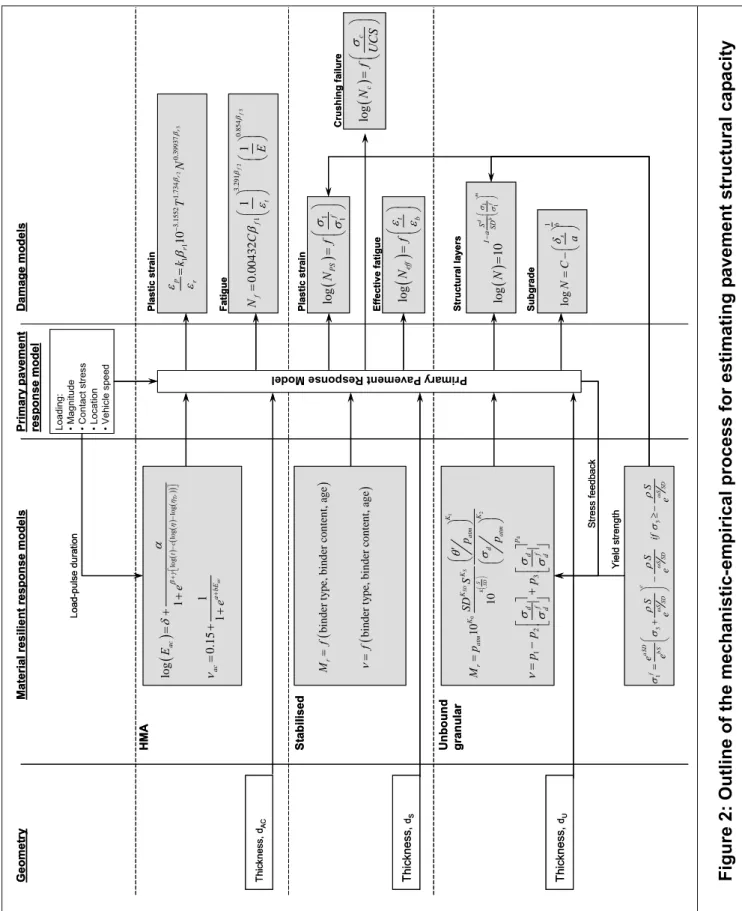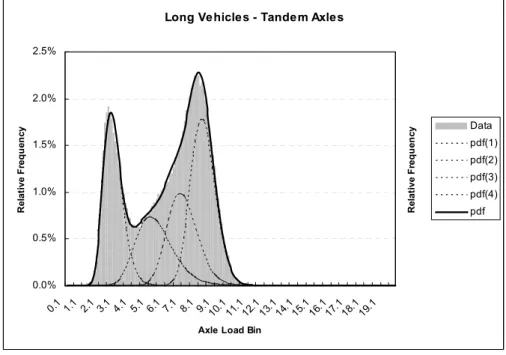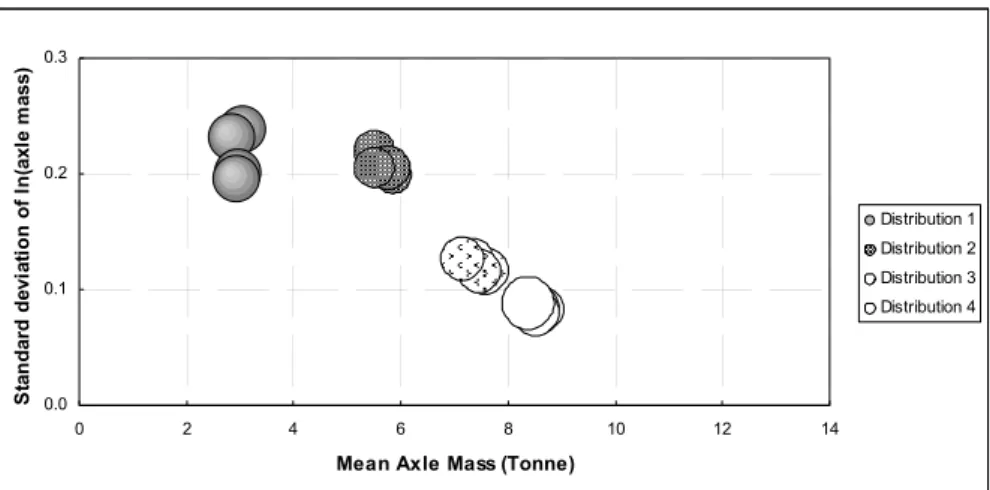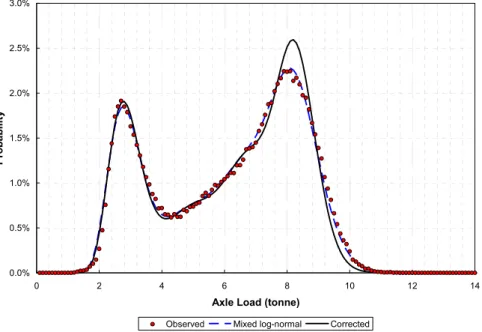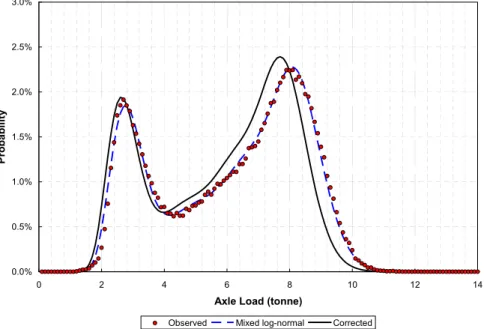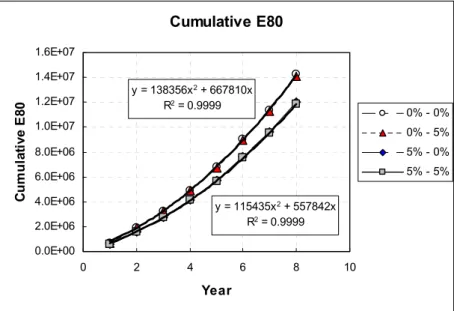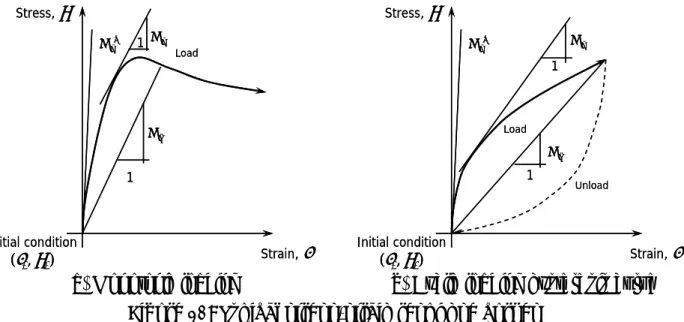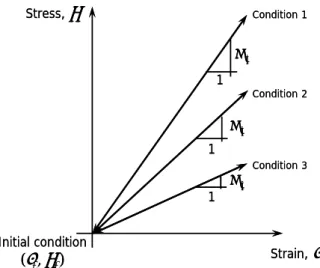Power (d) of the AAHTO exponential load equivalence formulation when axle load data are available;. Normalized histograms of axle load or equivalent axle load for heavy vehicle (E80i) for each of the heavy vehicle classes;. The main components of the process shown in Figure 2 for assessing structural capacity are discussed next.
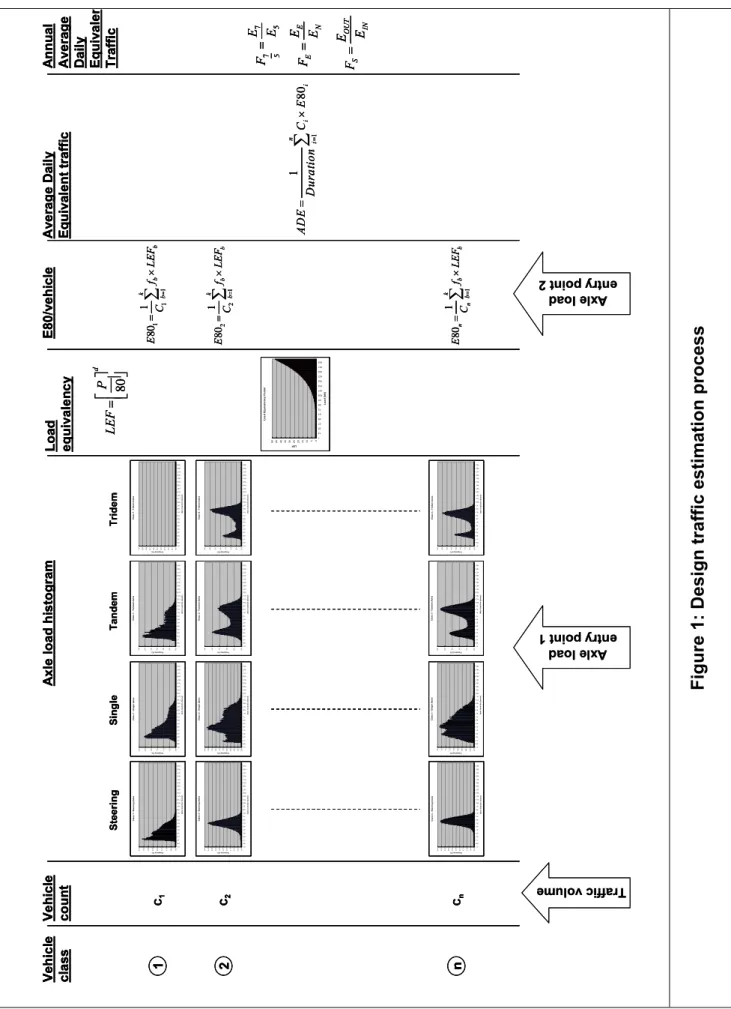
Resilient response models
Models for hot-mix asphalt
Equation (equation 6) and (equation 7) give the formulation for the stiffness modulus and comparison of the nd dynamic elastic m. The elastic response of hot-mix a . dependent) with the material's temperature and the binder properties having a significant influence on the material's response. Given the limited HMA test data available in South Africa, the revision of the SAMDM will rely heavily on HMA data and models from overseas research.
Therefore, it is expected that the models from the AASHTO 2002 ME Design Guide will be used for at least the first revision of the SAMDM. These models have been calibrated against an extensive database for the purpose of the AASHTO ME Design Guide, and predictive models are also available for specific mixture model parameters in terms of basic mixture parameters. Unfortunately, very few data are available to calibrate flexible response models for these time-related changes, and this aspect will have to be one of the research priorities of the revision process.
The effect of early curing shortly after construction on the resilient response of the material; These effects will be different for cement and bituminous stabilization, where the aging of bitumen is expected to result in an increase in the stiffness of the material, while carbonation of the cement reaction can lead to a reduction in the stiffness of the material;
Models for unbound material
The resilient response of this material group can vary from the stiff, brittle characteristics of cement-stabilized materials to near-viscoelastic behavior for mixes with high foamed and emulsified bitumen contents. At low cement and bituminous binder content, the resilient behavior of this material can approach that of unbound granular material depending on density, saturation and stress conditions. One aspect that certainly affects the resilient response of stabilized material is the time-related changes in the resilient response properties of this material.
It should be noted that the bulk stress term is in terms of effective stress, including the residual compression stress, overburden stress, suction pressure and external loading stress. These aspects will be discussed further during the discussion of the primary pavement response model. The model was calibrated for the combined data from a range of unbound granular material from sand to crushed stone with the same accuracy as the calibration of the model for the individual materials.
The model presented in Equation (Eq. 8) therefore provides a predictive model for the elastic modulus of unbound granular material with due consideration of density, saturation, and actual stress conditions.
Primary pavement response models
This will be achieved by using sublayers in the integral transformation solution of the multilayer, linear-elastic system, effectively implementing vertical stress dependence. In the case of the resilient response models for unbound material, the terms effective bulk stress, deviator stress, and yield or failure stress will require feedback from the primary pavement response model and an iterative solution will be implemented. The density and saturation dependence will be implemented as part of the primary pavement response model preprocessing.
The overburden stress will be calculated from the material density and the coefficient of lateral earth pressure at rest, the compressive stress from research by Uzan, and the suction pressure from a density- and saturation-dependent suction pressure approximation developed by These. S = degree of saturation (ratio of water-filled voids to total voids) E = base of natural logarithm. Models for HMA do not require feedback from the primary pavement response model, but thermally coupled stress analysis will be considered.
The effective stress for unbonded material and the thermally coupled stress for HMA will be considered according to the vector formulation given in Equation (Equation 11). A finite element primary pavement response model will therefore need to be implemented in subsequent revisions of the SAMDM.
Damage models
Damage models for HMA
Finite element analysis (FE) instruments will also have to be developed for the dynamic analysis of dynamic laboratory and field tests such as the FWD test. According to the AASHTO 2002 ME Design Guide for the Plastic Strain Model, the plastic strain of HMA material is assumed to be proportional to the elastic or resilient strain. Fundamental theory of plasticity (Chen and Mizuno, 1990), local (Maree, 1978 and Theyse and international research (Huurman, 1997 and Van Niekerk et al., 1998) on unbound material and international research on HMA (Long et al., 2002 ) relate the plastic strain of materials to deviatoric (shear) stress or a ratio that relates the deviatoric (shear) stress to the yield strength of the material.
The validity of the vertical elastic strain as the critical response parameter for HMA plastic strain therefore needs to be critically assessed during subsequent revision of the SAMDM and is likely to be replaced with a shear stress-based approach. Such an approach was used in the calibration of HMA plastic strain models for the California ME design method, CalME (Ullidtz et al, 2006). The damage model formulations in Equation (Eq. 12) and (Eq. 13) are also valid for total plastic strain and fatigue damage after "N" strain repetitions.
Although these formulations can be implemented in a recursive analysis scheme, incremental damage model formulations that provide the damage for a load repetition increment "ΔN" are more convenient for recursive implementation. Incremental damage models will therefore need to be calibrated for subsequent revisions of the SAMDM.
Damage models for stabilised material
It is expected that the critical response parameter for the plastic strain damage model of stabilized material will be a stress ratio that relates the working stress to the yield stress of the material. This requires the calibration of a yield stress model for stabilized material that includes the binder type, binder content, and probably the density of the material. The long-term changes in the yield stress of stabilized material will need to be quantified during subsequent revisions of the SAMDM.
The current practice of assigning the yield strength properties of the parent aggregate to a cement stabilized layer after the initial stiffness reduction phase is questionable unless there is complete chemical reversal of the cementitious reaction. This aspect needs to be resolved and yield strength models need to be calibrated to account for the long-term changes in the yield strength of stabilized material. Data from in-service pavements should be used to confirm or deny the stiffness reduction phase of bituminous stabilized layers during the initial review of the SAMDM.
These models relate the duration of the stiffness reduction phase to the ratio between the working strain and the fracture strain of the material. Current crushing failure models for cement-stabilized layers (de Beer, 1993) will be retained for the initial revision of SAMDM.
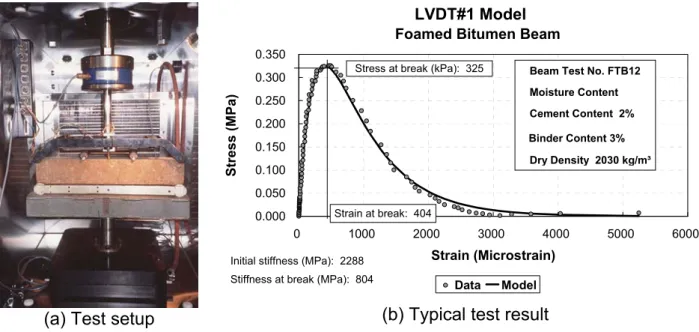
Damage models for unbound granular material
The model provides the suction pressure generated in the partially saturated material based on the soil-water characteristic curve of the material and is based on an effective stress formulation. The soil-water characteristic curve (SWCC) of the material is needed to determine the suction pressure in the partially saturated. A plastic strain damage model that relates stress ratio, number of strain repetitions and plastic strain of the material.
The prediction accuracy of the model for the combined data is on par with that of the models for the individual materials. The model incorporates the effect of the stress ratio, material density (firmness) and degree of saturation. The data and model are shown for different combinations of high density (HD), low density (LD), high saturation (HS) and low saturation (LS) showing the dramatic effect of the degree of saturation on the plastic strain response.
Unfortunately, a similar combined model could not be calibrated for the combined data of the natural gravel tested. It is recommended that the model for crushed stone material should be implemented as a plastic strain damage model during the initial revision of the SAMDM.
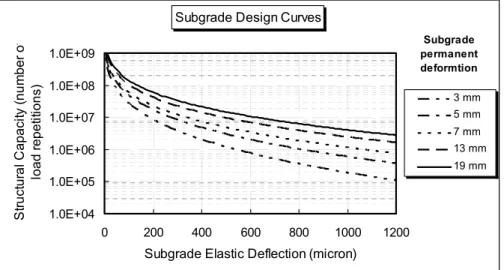
Application to new and rehabilitation design
Risk and performance simulation
Traffic related challenges
A program of sampling at permanent traffic survey sites therefore needs to be developed and implemented for South Africa. The data from such a program must be captured in a design traffic information system and made available to design engineers with the appropriate traffic data analysis tools. A secondary information system is required to relate axle pressure and tire pressure data to tire-pavement contact stress using data from stress-in-motion studies conducted in the research environment until stress-in-motion becomes a routine measurement.
Material characterisation
Environmental and construction impacts
Pre-calibrated material models
Validation and calibration of the method
Nevertheless, a design solution for the first revision of SAMDM needs to be established immediately. A selection of damage models for implementation during the first revision of the SAMDM is presented. Several information systems necessary for the successful implementation of the planning method were identified.
Mechanical Behavior of Soils and Unbound Granular Materials, Modeling of Flexible Pavements - Recent Advances.” Proceedings of the 8th International Conference on Asphalt Pavements. A Comprehensive Constitutive Model for Granular Materials in Flexible Pavement Structures.” Proceedings of the 8th International Conference on Asphalt Pavements. Tire-Pavement Interface Contact Loads on Flexible Pavements – Quo Vadis?.” Proceedings of the 8th Asphalt Pavement Conference for Southern Africa, Sun City.
Performance Prediction of Cold Foamed Bitumen Mixtures” Proceedings of the 9th International Conference on Asphalt Pavements. Re-evaluation of some aspects of the mechanistic-empirical design approach." Proceedings of the 8th Asphalt Pavement Conference for Southern Africa.
